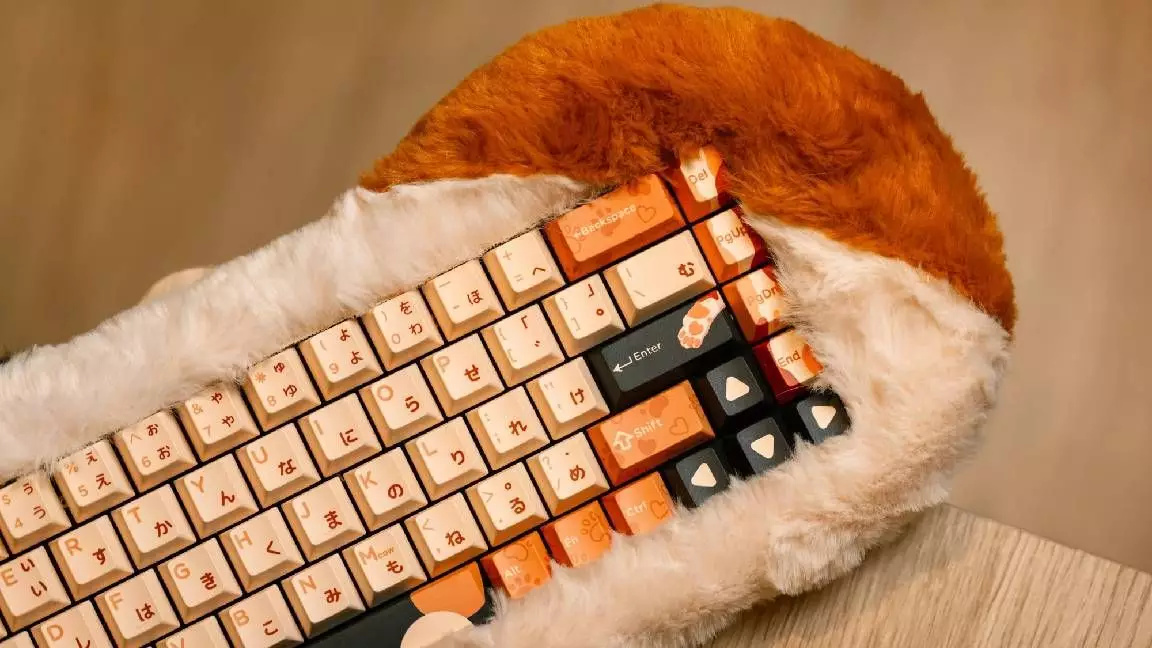The electronic accessories industry, particularly keyboards, has burgeoned into a peculiar niche that reflects personality, aesthetics, and practicality all at once. Among the myriad options available, novelty keyboards often catch the discerning eye, as they encapsulate playful design while also catering to the user’s individual taste. However, my personal experiences and reflections on the Petbrick 65 by Dry Studio reveal a conflict between impulse and practicality, urging a pause for strategic contemplation.
The aesthetics of the Dry Studio’s Petbrick 65 epitomize the traits that often overshadow consumer logic. With its fluffy outer frame and adorable colorways, the keyboard evokes a sense of whimsy that is hard to resist. The creators tout an irresistibly beautiful texture, akin to children’s toys from Jelly Cat—a clever marketing intersection mixing childhood nostalgia with adult gaming culture and office ergonomics. This innovation may compel one to overlook practical concerns such as budget constraints and overall desktop clutter. Indeed, the phrase “Oo, shiny!” encapsulates that moment of exhilaration when confronted with an enticing product, but it quickly leads to the stark realization of limited financial and physical space.
It’s not just the tactile appeal of the Petbrick that breaks down rational barriers; its functionality also poses unique advantages. The soft, washable outer shell presents a dream scenario for those who may indulge in messy desk habits. The flexibility offered by its design signifies an evolution in the keyboard realm, promoting both hygiene and personalization. Yet, this brings forth an essential inquiry: How much of this whimsy veils the core essence of what makes a keyboard effective?
With a price tag hovering around $239, one starts to question whether novelty can warrant such expense. The combination of aesthetics and whimsical design does provoke a delightful emotional response, yet it remains imperative to scrutinize whether these traits translate into substantial functionality. A keyboard is, after all, a tool intended to enhance productivity. Herein lies the conflict: can we justify investing significantly in a product whose key features may primarily cater to visual flair rather than ergonomic efficiency?
Moreover, the conversation often veers into that of consumer identity—one’s desire to stand out amidst a sea of uniformity breeds a willingness to part with finances. However, the inherent risk here is the potential overvaluation of novelty over necessity. As keyboards continue to embrace playful themes and animated interfaces, they also introduce elaborate functionalities that could easily overshadow foundational capabilities, such as comfort during long typing sessions or the accuracy of keystrokes.
The mention of keyboards equipped with screens, such as SteelSeries’ Apex Pro TKL Gen 3, further delves into a captivating intersection of technology and user engagement. The inclusion of animated screens and customization options allows for a more interactive typing experience, fueling individuality through tailored visual responses. For example, the “Bongo Cat mode” infuses delightful humor into the mundane act of typing, providing a diversion that, while entertaining, may serve as a distraction to productivity.
Such novelty features are sure to resonate with an audience that fosters a love for personalization and aesthetic charm. However, buyers must assess if these features weigh evenly against performance metrics such as switch quality and latency. The fundamental function of a keyboard—to provide a responsive and comfortable typing experience—should not be eclipsed by curious gimmicks.
Ultimately, the allure of unique keyboards like the Petbrick 65 lies within their whimsical designs and potential for becoming conversation pieces. Yet, as consumers, the onus falls on us to strike a balance between aesthetic delight and practical utility. Novelty should enhance, not detract, from the essential ergonomic experience we seek from our devices. As my fascination with these keyboards unveils deeper reflections on our consumer choices, it becomes clear that each purchase should echo thoughtful analysis rather than impulsive excitement.
As the trend of fluffy and themed keyboards continues its rise, a careful evaluation of whether these innovations add value to our lives is crucial. While the temptation of novelty may be potent, we would do well to remain guarded in our spending, ensuring that our keyboard choices harmonize aesthetics with functionality to foster a truly effective typing experience.

